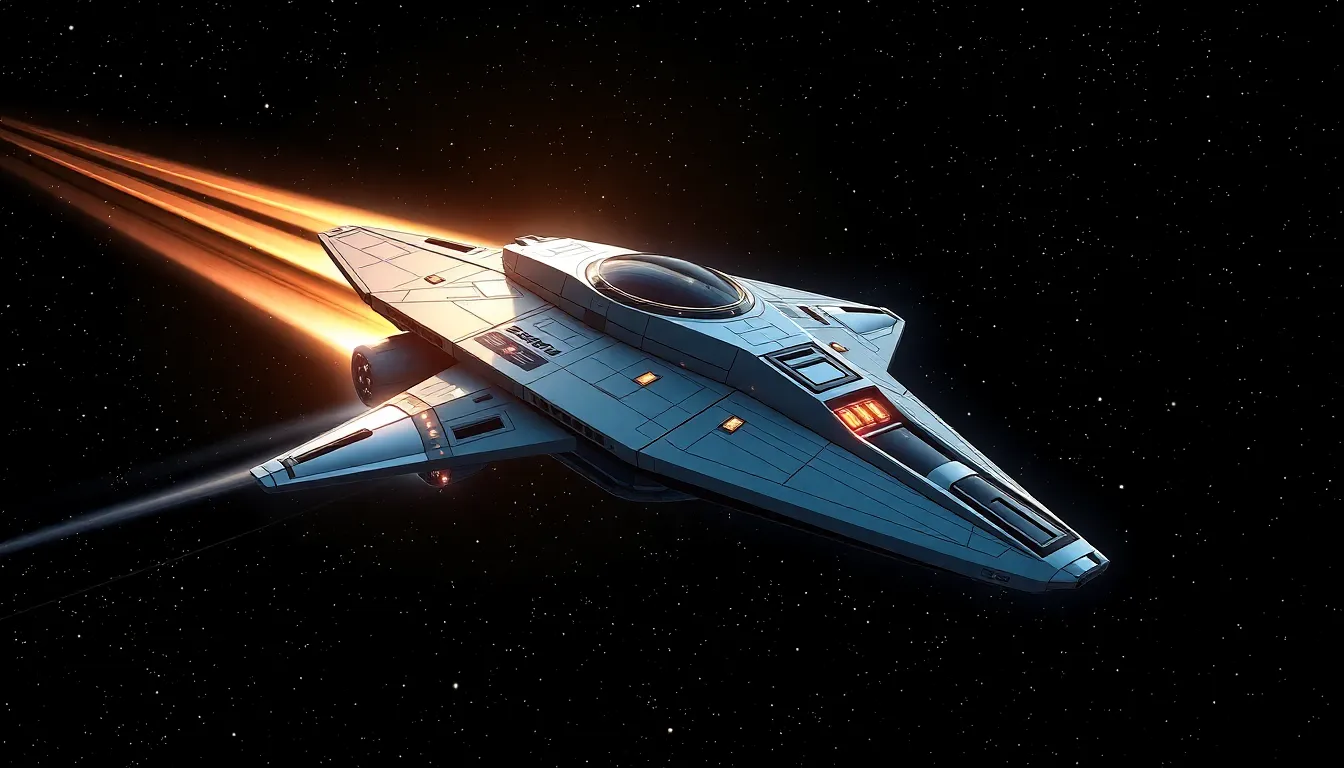In a universe full of possibilities, advanced space technology is the rocket fuel propelling humanity into a new era of exploration and innovation. Think of it as the ultimate upgrade from flip phones to smartphones, but for the cosmos. From sleek spacecraft that could put a Tesla to shame to revolutionary propulsion systems that make interstellar travel seem less like science fiction and more like a weekend getaway, the sky’s no longer the limit.
Table of Contents
ToggleOverview of Advanced Space Technology
Advanced space technology encompasses innovations that significantly enhance exploration and understanding of outer space. This field includes sophisticated spacecraft built with cutting-edge materials designed for durability and efficiency. Notably, propulsion systems have evolved to include ion thrusters and nuclear thermal propulsion, which enable faster travel over vast distances.
Robotics play a crucial role in space missions. Robotic arms and autonomous rovers conduct repairs and gather scientific data, minimizing human risk in harsh environments. Moreover, advancements in artificial intelligence allow spacecraft to analyze data in real-time, optimizing mission outcomes and decision-making processes.
Communication systems have transformed as well. High-frequency antennas now transmit data at unprecedented speeds, allowing for continuous connection between Earth and spacecraft. Innovations in satellite technology enhance global communication networks and provide critical data for navigation and weather forecasting.
Life support systems have improved dramatically. Closed-loop systems recycle air and water efficiently, making long-duration missions more feasible. Technologies that monitor health and nutrition ensure crews maintain optimal well-being during space exploration.
Commercial space ventures have emerged as significant players in this ecosystem, fostering competition and innovation. Companies like SpaceX and Blue Origin are pioneering reusable launch systems, drastically reducing costs and making space more accessible.
Advanced space technology reflects a convergence of multiple disciplines, driving humanity toward new frontiers. It equips scientists and engineers with tools to explore beyond known boundaries, paving the way for future discoveries in the cosmos.
Key Innovations in Advanced Space Technology

Advanced space technology features numerous innovations that push the boundaries of what’s possible in space exploration. These developments enhance spacecraft capabilities, improve mission efficiency, and support long-term sustainability.
Propulsion Systems
Propulsion systems play a crucial role in advancing space missions. Ion thrusters offer greater fuel efficiency compared to traditional chemical rockets, allowing deeper exploration with less propellant. Nuclear thermal propulsion systems provide high thrust and efficiency, enabling faster travel to distant destinations. Electromagnetic propulsion, such as the electromagnetic railgun, demonstrates potential for launching payloads into space without combustion. Each system’s development enhances the feasibility of interstellar journeys, positioning humanity closer to exploring other star systems.
Materials Science
Materials science drives significant advancements in spacecraft design and durability. New lightweight composites reduce structural weight, improving fuel efficiency and overall performance. Advanced ceramics withstand extreme temperatures, enhancing spacecraft’s ability to endure harsh environments during interplanetary flights. Self-healing materials contribute to longer mission durations by repairing minor damages autonomously. Developing radiation-resistant materials protects both spacecraft and crew from harmful cosmic radiation. Each innovation fosters resilience in challenging space conditions, paving the way for longer and more ambitious missions.
Applications of Advanced Space Technology
Advanced space technology plays an essential role in various fields, significantly enhancing capabilities across multiple sectors.
Space Exploration
Space exploration benefits immensely from advanced technology, enabling missions to distant celestial bodies. Sophisticated spacecraft equipped with cutting-edge propulsion systems facilitate longer missions. Such systems, including ion thrusters, minimize fuel consumption while maximizing speed and efficiency. Moreover, robotics enhances exploration by allowing for repairs and data collection in environments that are inhospitable to humans. Artificial intelligence contributes by analyzing real-time data, ensuring safety and optimizing mission outcomes. The blend of these advanced technologies fosters a future where exploring Mars, the Moon, or even beyond is increasingly attainable.
Satellite Technology
Satellite technology showcases the profound impact of advanced space innovations on communication and data gathering. High-frequency antennas enable quick data transmission, significantly improving global connectivity. Current satellites utilize advanced materials and design, enhancing durability and functionality. Improved satellite systems support various applications, from GPS navigation to climate monitoring. Additionally, the rise of commercial satellites promotes competition and innovation, driving the development of new services and benefits for society. Ultimately, these advancements are reshaping how data is collected and shared, facilitating advancements in numerous sectors.
Challenges and Future Directions
Advanced space technology faces several challenges as it evolves. Cost-effectiveness represents a significant hurdle, particularly in spacecraft development and launch expenses. Innovations need to balance efficiency and affordability to promote broader access to space. The complexity of advanced propulsion systems, while enhancing mission capabilities, poses engineering challenges that can delay progress.
Safety also remains a paramount concern. Developing reliable life support systems is crucial for long-duration missions. Creating systems that maintain human health and performance over extended periods in harsh environments requires ongoing research and development. Robotics technology must ensure that autonomous systems can handle complex tasks safely, minimizing risks for crewed missions.
Sustainability has emerged as a focal point for future exploration. Addressing space debris management becomes essential as the number of satellites increases. Striking a balance between innovative launches and preserving space environments will be vital to ensuring long-term space viability. Moreover, reliance on resources from celestial bodies like asteroids and the Moon is crucial, demanding advancements in resource extraction and processing technologies.
Toward the future, collaboration among public and private sectors will enhance innovation. Partnerships can facilitate knowledge sharing and resource allocation, accelerating advancements in technology. Emerging trends, such as the use of artificial intelligence for data analysis and mission planning, promise to streamline operations and improve outcomes.
The integration of new materials shapes the direction of spacecraft design. Lightweight composites and self-healing materials will play a crucial role in enhancing durability. Such innovations help withstand the harsh conditions of outer space, allowing for longer missions and more ambitious exploration scenarios.
Continued investment in education and workforce development will support these advancements. Fostering talent in aerospace engineering, computer science, and robotics creates a skilled workforce prepared to tackle the challenges ahead. As global interest in space exploration grows, these efforts will ensure that advancements in technology lead to meaningful progress in humanity’s journey into the cosmos.
Advanced space technology is reshaping humanity’s journey into the cosmos. The innovations in propulsion systems robotics and materials science are breaking barriers that once seemed insurmountable. As commercial ventures drive competition and collaboration between sectors flourishes the potential for groundbreaking discoveries grows exponentially.
While challenges remain in cost safety and sustainability the commitment to overcoming these obstacles is evident. The future of space exploration hinges on continued investment in technology education and workforce development. With these advancements humanity is poised to embark on an exciting new era of exploration and understanding in the vast universe.





